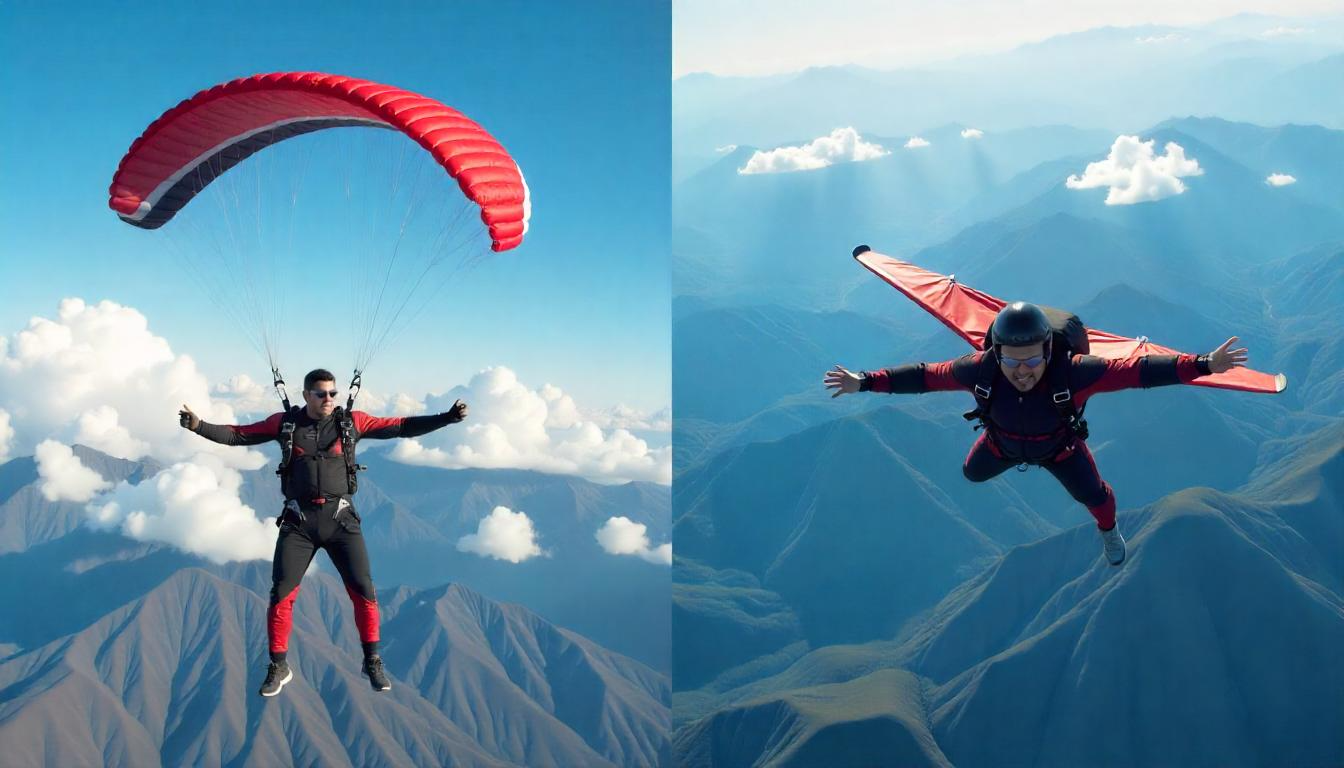Extreme Sports Fandom has captured global attention, attracting millions of fans and participants. These activities are known for their high risks and the rush of excitement they create. From the acrobatics of parkour to thrilling cliff dives and the challenges faced by big wave surfers, these sports stretch human limits. They exhibit remarkable Extreme Sports Psychology and inspire awe in those who watch. The appeal of Extreme Sports Fandom is varied. For athletes, the motivation often comes from wanting to exceed their limits and grow personally. Many participants crave Risk-Taking Behavior and excitement, seeking a break from daily routines. The challenge of learning a new skill or executing a tricky stunt enhances the experience. For fans, the thrill lies in watching acts of courage and talent. The intense emotions displayed in these activities can forge a unique Extreme Sports Culture, different from other sports.
The Extreme Sports Fandom culture is distinctive. Fans build communities based on their shared love for adventure, supporting each other in their goals. Social media is vital in this culture, providing a Social Media & Extreme Sports platform to share experiences and successes. Videos and photos from events spread quickly, encouraging others to join in. This sense of the belonging boosts commitment of both fans and the participants. Risk is a core part of Extreme Sports Fandom. Athletes face dangers like serious injuries or even death.
This element adds to the excitement, as fans recognize the Risk Taking Behavior involved. However, it raises concerns about Extreme Sports Safety and athlete responsibility. Many participants take steps to reduce risks, using proper gear and training to improve their skills. Extreme Sports Fandom creates a lively and committed community. The mix of Risk, excitement, and shared enthusiasm attracts both participants and spectators. Understanding what drives this passion reveals a world where limits are pushed, and the pursuit of excitement unites people.

Defining Extreme Sports
Extreme Sports Fandom encompasses a diverse range of activities, each with its own characteristics. This category includes popular sports like skateboarding and snowboarding, along with less mainstream options such as wingsuit flying and free solo climbing. While there is no single definition for Extreme Sports Fandom, they share some common traits.
High Risk: A key aspect is the high level of risk. Participants often encounter significant physical dangers, facing the possibility of serious injuries or even death. This risk is appealing to many who seek thrills, as it adds excitement to their experiences. This is a prime example of Adrenaline Junkies in action.
Adrenaline Rush: Another important element is the adrenaline rush that participants experience. The stress of these sports triggers the body to release adrenaline, leading to intense feelings of excitement and alertness. Many athletes become hooked on this rush, pushing themselves to tackle even more demanding Risk-Taking Behavior challenges.
Skill and Mastery: Skill and proficiency are essential in extreme sports. Athletes need to build exceptional physical and mental capabilities to excel. This often requires years of hard work and commitment. Training typically involves practicing in different settings to prepare for the unpredictable nature of these activities.
Thrill-Seeking: The quest for excitement drives athletes to test their limits and pursue new challenges. This motivation not only sharpens their skills but also brings a sense of achievement when they overcome difficulties. The blend of Risk, adrenaline, skill, and the pursuit of excitement creates a unique Extreme Sports Culture, attracting adventurous individuals from all walks of life.

The Psychology of Extreme Sports Participants

The Adrenaline Junkie: Many people who engage in extreme sports are attracted to the intense rush of adrenaline. This response is part of the body’s natural reaction to stress or danger. When adrenaline is released, it creates a temporary feeling of energy and happiness. This sensation can become addictive, drawing individuals back to the sport again and again. The thrill that comes from the heart-pounding moments can be hard to resist, as it offers an Adrenaline Junkie experience.
The Mastery Seeker: For others, the motivation to participate in extreme sports stems from a strong desire to achieve mastery over their chosen activity. These individuals are often dedicated to pushing their physical and mental boundaries. They train hard, practice diligently, and seek out challenging conditions to improve their skills. The pursuit of excellence drives them onward, as they strive for peak performance in their sport. This tour of the self improvement and the skill development is both fulfilling and rewarding.
The Risk-Taker: A common personality type among extreme sports enthusiasts is the Risk-Taker. These individuals are not afraid to face danger. They seek new and thrilling experiences, often embracing uncertainty. This adventurous spirit fuels their passion for extreme sports. They enjoy the challenge that comes with pushing limits and experiencing life on the edge. This willingness to take Risk-Taking Behavior often sets them apart from others who prefer safer activities.
The Escapist: For a segment of extreme sports participants, the activity serves as a form of escape. Life can feel monotonous, filled with routine and obligations. Extreme sports provide a break from that daily grind. They offer a sense of freedom that is hard to find in everyday life. Engaging in these activities allows the individuals to disconnect from their responsibilities and sink themselves in most thrilling experiences. This temporary diversion brings both excitement and relief from the pressures of the world.
Extreme Sports Fandom and Community

The Tribe Mentality: Extreme sports create strong connections between athletes and fans. This close knit community offers the sense of belonging that is very rare. When people share risks and experiences, they build a unique bond. They relate to each other’s struggles and victories. The language of extreme sports goes beyond just words and techniques; it includes the emotions tied to taking risks and earning rewards. This common ground fosters a sense of connection among fans and participants.
The Digital Age: Social media has transformed the way people engage with extreme sports. Platforms like Instagram and YouTube enable fans to interact directly with athletes. They can follow their favorite sports stars, watch exciting videos, and share their own experiences. This immediate interaction unites fans worldwide, allowing them to celebrate achievements and milestones together. Fans can discuss events, share advice, or create support networks, deepening their involvement in the sport.
The Influence of Media: Media coverage has also played a key role in making extreme sports popular. Well-made films and documentaries capture the spirit of these activities. Viewers learn about athletes’ lives, training routines, and the risks they take. These productions highlight not only the excitement of the sport but also the hard work and passion behind it. This visibility generates enthusiastic fans who want to support the athletes and the sport.
The Commercialization of Extreme Sports: Commercial interests have impacted extreme sports. Sponsorships, prize money, and media attention help the industry grow. While this increase in visibility benefits athletes, it raises concerns about Risk in these sports. The line between true passion for the sport and pressure from sponsors can become unclear. As athletes pursue financial gains, ethical questions about Risk-Taking Behavior emerge. The excitement of extreme sports now coexists with commercialization, changing the experience for both athletes and fans. Balancing passion with profit poses a challenge for the community.
The Risks and Realities of Extreme Sports Fandom

The Danger of Injury: The most obvious risk is injury. Participants often push their bodies to the limit, which raises the chance of getting hurt. Common injuries that include fractures, and the concussions, and even the spinal damage. In extreme cases, accidents can result in serious injuries or death. These risks emphasize the need for Extreme Sports Safety measures, proper training, and a clear understanding of one’s physical limitations.
The Environmental Impact: Another important factor is how extreme sports affect the environment. Activities like big wave surfing and heli-skiing can harm fragile ecosystems. The quest for pristine spots can lead to more people visiting, leaving litter, and causing pollution. Additionally, the use of helicopters during heli-skiing can increase noise pollution and disturb local wildlife. This added pressure on the environment raises concerns about sustainability and the duty of athletes to care for the natural areas they enjoy.
The Ethical Debate: The ethical issues surrounding extreme sports create further discussion. Critics claim these sports promote a culture that celebrates Risk-Taking Behavior and might lead to reckless actions. They view extreme sports as distractions that can make people ignore Extreme Sports Safety and the risks involved. Supporters, on the other hand, see these activities as meaningful forms of self-expression. They emphasize individual freedom and the personal growth that can come from participating in Extreme Sports Fandom. This ongoing debate mirrors broader views in society about Risk, responsibility, and the importance of adventure. In conclusion, knowing the risks, environmental effects, and ethical questions related to Extreme Sports Fandom is vital for anyone involved or interested. Being aware of these factors can help people make better choices and engage more responsibly in extreme sports.
Conclusion
Extreme Sports Fandom attracts people worldwide with their thrilling nature. Participants love the challenge of pushing their limits and feeling intense excitement. The adrenaline rush appeals to both experienced athletes and beginners. Many enjoy the sense of community that forms among those who share this passion. These connections often grow beyond the sport itself. As technology advances, the opportunities in Extreme Sports Fandom continue to grow. New gear improves Extreme Sports Safety and performance, enabling athletes to take their skills to new heights. Our deeper understanding of human capabilities also influences the evolution of these activities. This mix of innovation and knowledge keeps Extreme Sports Fandom exciting.
The future for Extreme Sports Fandom appears bright. With each advancement, these activities will become more thrilling and demanding. As new boundaries are explored, people will keep wondering what is possible in sports. The ongoing interest in Extreme Sports Fandom shows no signs of lessening. The combination of Risk, community, and progress ensures these activities stay vibrant in global culture.




